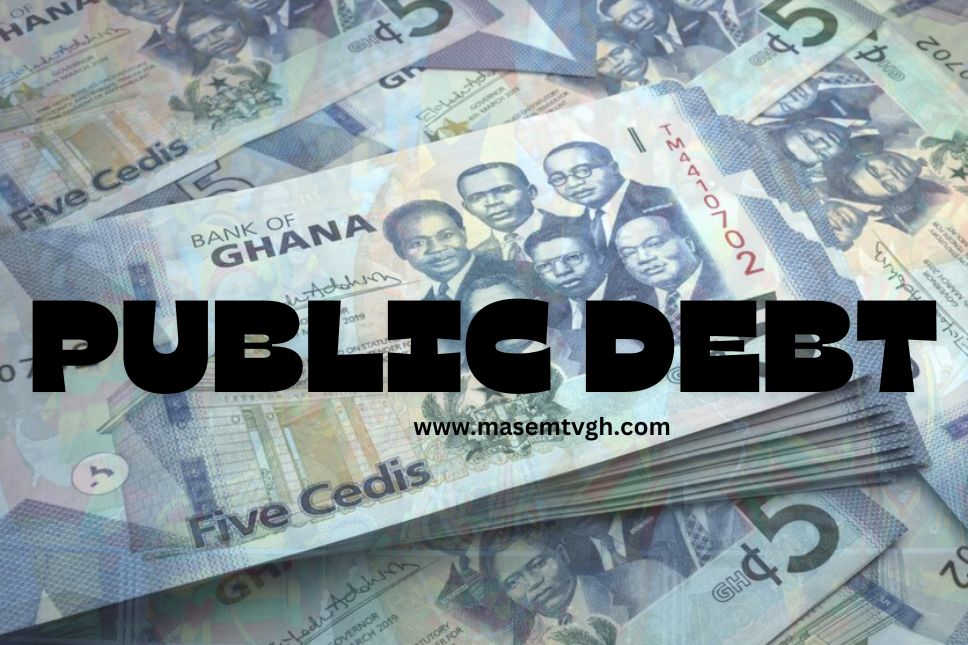In a concerning development for Ghana’s economy, the country’s public debt has soared to a staggering GH₵658.6 billion. This alarming increase means that every Ghanaian now effectively owes GH₵19,671, based on the nation’s current population. This rise in debt underscores the significant fiscal challenges facing the country and raises critical questions about the sustainability of its economic policies.
A Closer Look at the Debt Figures
The surge in public debt is a result of various factors, including increased government borrowing to finance infrastructure projects, social programs, and other public expenditures. The GH₵658.6 billion figure represents a substantial burden on the nation’s economy, affecting both current and future generations. This figure includes both domestic and external debts, highlighting the broad scope of the nation’s financial obligations.
Implications for Ghanaians
For the average Ghanaian, this level of debt translates to a personal debt load of GH₵19,671. This means that if the debt were to be evenly distributed among the population, each citizen would owe this amount. Such a high per capita debt burden can have numerous implications:
1. Economic Pressure: High levels of public debt can lead to increased taxes and reduced public spending as the government seeks to manage and repay its obligations. This can strain household budgets and reduce disposable income.
2. Investment and Growth: Large debt levels can hinder economic growth by crowding out private investment. Investors may be wary of putting money into an economy with high debt levels, fearing instability and potential defaults.
3. Inflation and Currency Depreciation: Excessive borrowing can lead to inflationary pressures if the government resorts to printing money to finance its debt. Additionally, a high debt load can put downward pressure on the national currency, leading to depreciation and increased import costs.
4. Social Services: Public debt repayment can divert funds away from essential services such as education, healthcare, and infrastructure development, potentially affecting the quality of life for many Ghanaians.
Government Response and Strategies
The government has acknowledged the seriousness of the debt situation and has outlined several strategies to address it. These include:
1. Fiscal Consolidation: Efforts to reduce the fiscal deficit through prudent expenditure management and enhanced revenue mobilization. This includes tax reforms and measures to increase efficiency in public spending.
2. Debt Restructuring: Engaging in negotiations with creditors to restructure existing debts, potentially extending repayment periods and reducing interest rates to make debt servicing more manageable.
3. Economic Diversification: Initiatives aimed at diversifying the economy to reduce reliance on external borrowing. By developing key sectors such as agriculture, manufacturing, and services, the government hopes to boost domestic revenue generation.
4. Public-Private Partnerships (PPPs): Encouraging private sector investment in infrastructure and other critical areas through PPPs, reducing the need for direct government borrowing.
Looking Ahead
While the rise in public debt to GH₵658.6 billion is undoubtedly a cause for concern, it also presents an opportunity for Ghana to reassess and refine its economic policies. Addressing this challenge will require a coordinated effort from the government, private sector, and citizens. Transparent communication and effective policy implementation will be crucial in navigating this complex issue.
For the average Ghanaian, understanding the implications of the national debt and staying informed about government actions can help in making better personal financial decisions and advocating for policies that promote sustainable economic growth.
In conclusion, while the current debt situation is daunting, it is not insurmountable. With strategic planning and collective effort, Ghana can overcome this challenge and build a more resilient and prosperous economy for all its citizens.

